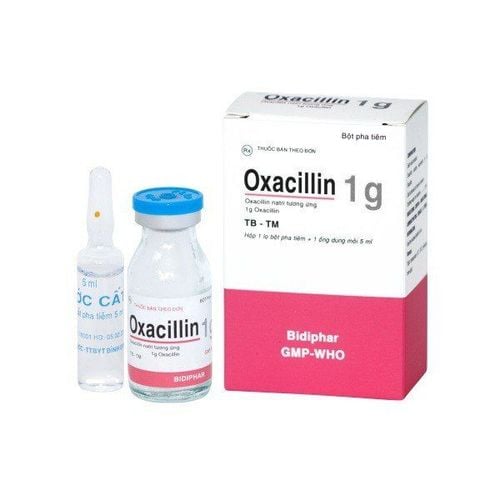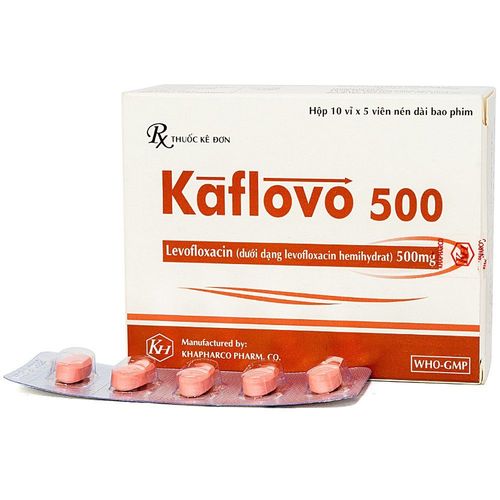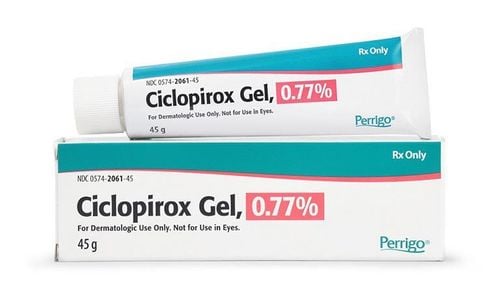This is an automatically translated article.
Pimenem medicine has the main ingredient Meropenem and other excipients in a sufficient amount. The drug is used to effectively treat many bacterial infections such as community-acquired or hospital-acquired pneumonia, bronchitis - cystic fibrosis, urinary tract infections...
1. What is Pimenem?
The composition of Pimenem contains the main active ingredient Meropenem 1g and other excipients added according to the manufacturer's formula with a sufficient amount of 1 tablet.
Dosage form: Powder for injection.
2. Effects of Pimenem 1g
Main active ingredient Meropenem is a Carbapenem antibiotic that is used intravenously; Bactericidal mechanism: Penetrates bacterial cells and inhibits cell wall synthesis by binding to Penicillin-binding proteins; Meropenem has antibacterial spectrum against most Gram-negative, Gram-positive bacteria and some aerobic and anaerobic bacteria such as Klebsiella, E. coli, Enterococcus. According to some studies, the drug Meropenem has stronger activity than Imipenem against Enterobacteriaceae bacteria and weaker than Imipenem on Gram-positive bacteria; In addition, Pimenem 1g also has a higher stability than beta-lactamase degrading enzyme, so it can avoid being destroyed by this enzyme.
3. What disease does Pimenem treat?
Pimenem 1g intravenously (IV) is indicated in the treatment of bacterial infections in adults and children caused by one or more bacteria sensitive to the active ingredient Meropenem as follows:
Pneumonia related to the hospital or community setting; Bronchopulmonary infections for cystic fibrosis; Complicated urinary tract infections; Intra-abdominal infections; Infections during and after birth; Skin and soft tissue infections with complications; Acute bacterial meningitis; Fever caused by leukopenia. Pimenem 1g is effective in mixed infections even when used alone or in combination with other antibiotics.
Empiric treatment of suspected bacterial infections in adults with febrile neutropenia as monotherapy or in combination with antiviral or antifungal agents; Meronem alone or in combination with other antibacterial drugs has been shown to be effective in the treatment of mixed infections; The drug Meropenem administered intravenously has shown effectiveness against cystic fibrosis and chronic lower respiratory tract infections when used as monotherapy or in combination with some other antibacterial drugs; At present, there is no experience with the use of Pimenem 1g in children with primary or secondary leukopenia or immunodeficiency.
4. How to use and dose Pimenem
How to use Pimenem 1g:
Pimenem 1g is used by injection or intravenous infusion; For intravenous route: Mix Pimenem 1g with sterile distilled water to get a solution with a concentration of about 50mg/ml, the injection time is about 5 minutes; Intravenous infusion: Dilute 1 vial of Pimenem 1g in 20ml of sterile distilled water, then dilute it with the corresponding infusion solutions such as Sodium chloride 0.9%, Glucose 5%. Intravenous infusion time is about 15 to 30 minutes; Technical manipulations are performed by medical staff, patients are not allowed to use them on their own. Therapeutic dose of Pimenem 1g:
For adults: Depending on the level of infection and the specific condition, the doctor will prescribe an appropriate dose for a certain period of time; Community-acquired pneumonia, hospital-acquired pneumonia, urinary tract infections, skin and skin structure infections, complicated intra-abdominal infections, infections during or after childbirth, fever caused by leukopenia demand: 1g/time, about 8 hours apart; Bronchitis - lung disease in patients with cystic fibrosis, meningitis: 2g/time, about 8 hours apart. For people with renal failure: From 26-50ml/min: Use one dose unit each time, every 12 hours; From 10-25ml/min: Use half a dose unit every 12 hours; Less than 10ml/min: Use half a dose unit every 24 hours. For the elderly or people with impaired liver function: It is not necessary to adjust the therapeutic dose of Pimenem 1g. For children: Children over 3 months old and weighing less than 50kg: Treatment of community-acquired or hospital-acquired pneumonia, urinary tract infections, intra-abdominal infections, skin and skin structure infections with complications: 10-20mg/kg, about 8 hours apart; Treatment of fever and leukopenia: 20mg/kg body weight, about 8 hours apart; Treatment of bronchitis - lung with cystic fibrosis or people with meningitis: 40mg/kg body weight, every 8 hours. Children weighing more than 50kg: It is recommended to use the same therapeutic dose as for adults.
5. How to handle missed dose, overdose
In case of missed dose: The use of Pimenem 1g by medical staff should limit the missed dose. If unfortunate happens, immediately notify the treating doctor for treatment. In case of overdose: During treatment with the drug, an overdose may occur, especially in people with impaired renal function. Treatment of drug overdose is mainly symptomatic with non-specific supportive measures. In addition, hemodialysis with rapid elimination of meropenem and its metabolites can also be used. In normal people, Pimenem 1g will be rapidly eliminated by the kidneys, while in renal failure, hemodialysis will eliminate Meropenem and other metabolites.
6. Undesirable effects of Pimenem
The use of Pimenem rarely occurs serious unwanted effects. The following adverse effects reported in clinical trials include:
Injection site reactions: Thrombophlebitis, painful swelling at the injection site; Rare systemic allergic reactions have been reported with the use of Meropenem. These reactions include angioedema and anaphylaxis; Skin reactions include an itchy red rash or hives. Serious skin reactions such as erythema multiforme, Stevens-Johnson syndrome and toxic skin necrosis have been reported rarely; Gastrointestinal reactions include abdominal pain, nausea, vomiting, diarrhea, and pseudomembranous colitis. Hematological reactions such as thrombocytopenia, eosinophilia, thrombocytopenia, leukopenia and neutropenia (including agranulocytosis very rarely) are reversible. Hemolytic anemia, direct or indirect positive Coombs reaction may occur in some people; a decrease in partial thromboplastin time has been reported; Reactions affecting liver function such as increased levels of bilirubin, transaminases, alkaline phosphatase and lactic dehydrogenase in serum alone or in combination have been reported; Central nervous system reactions such as headache, paresthesia, convulsions; Other undesirable effects may be encountered such as oral and vaginal candidiasis.
7. Pimenem drug interactions
It is worth noting that there are some significant interactions between the drug Meropenem and the following other drugs:
Probenecid competes leading to inhibition of the renal tubular secretion of the drug Meropenem. Thus, inhibiting the renal excretion of Meropenem, increasing the half-life and plasma concentration of Meropenem; Meropenem, when used in combination, can reduce the concentration of valproic acid below the therapeutic limit, should be closely monitored and the therapeutic dose adjusted accordingly.
8. Some notes when using Pimenem
Note on drug use with special groups:
Use on pregnant women: During pregnancy, there are no adequate data on the safety of Pimenem 1g for the development of the fetus. pediatric. Therefore, Pimenem 1g should not be used for treatment, in case of necessity, the doctor needs to weigh the potential benefits and risks. During lactation: Meropenem is not known to be excreted in human milk. Therefore, to ensure safety for children, Pimenem 1g should not be used for breastfeeding mothers. Drivers and Machine Operators: There are currently no reports on the effects of Pimenem on the ability to drive or operate heavy machinery in users; Use in children: Efficacy and tolerability of Pimenem 1g in children under 3 months of age have not been established, therefore Meropenem is not recommended for children under 3 months of age. At present, there is no experience with the use of the drug in children with impaired liver or kidney function. Other special note:
Read the instructions carefully before using the drug; Like other antibiotics, Pimenem 1g can cause pseudomembranous colitis. Therefore, caution should be exercised when prescribing the drug to people with a history of gastrointestinal diseases, especially colitis; Pimenem should not be used in patients with brain damage or epilepsy. The reason is that the drug will increase the risk of convulsions and adverse reactions on the nervous system; Before using Pimenem 1g for treatment, doctors usually appoint a test for hypersensitivity reactions to beta-lactam antibiotics; For people with impaired liver function, it is necessary to closely monitor the levels of Transaminase and Bilirubin in the body; In the case of infections caused by Staphylococcus bacteria that are resistant to Methicillin, Pimenem 1g is not recommended; People with damage to the nervous system also need to be monitored during use, may have to reduce the dose; Storage conditions: Keep Pimenem 1g in a cool, dry place, avoid direct sunlight, avoid too hot or humid air. The best room temperature is below 30 degrees Celsius. Keep the medicine out of reach of small children and family pets. In summary, Pimenem is used to effectively treat many infectious diseases such as community-acquired pneumonia or hospital-acquired pneumonia, bronchitis - cystic fibrosis, urinary tract infections... Patients need to read carefully. instructions, consult your doctor before using the drug.
Please dial HOTLINE for more information or register for an appointment HERE. Download MyVinmec app to make appointments faster and to manage your bookings easily.













